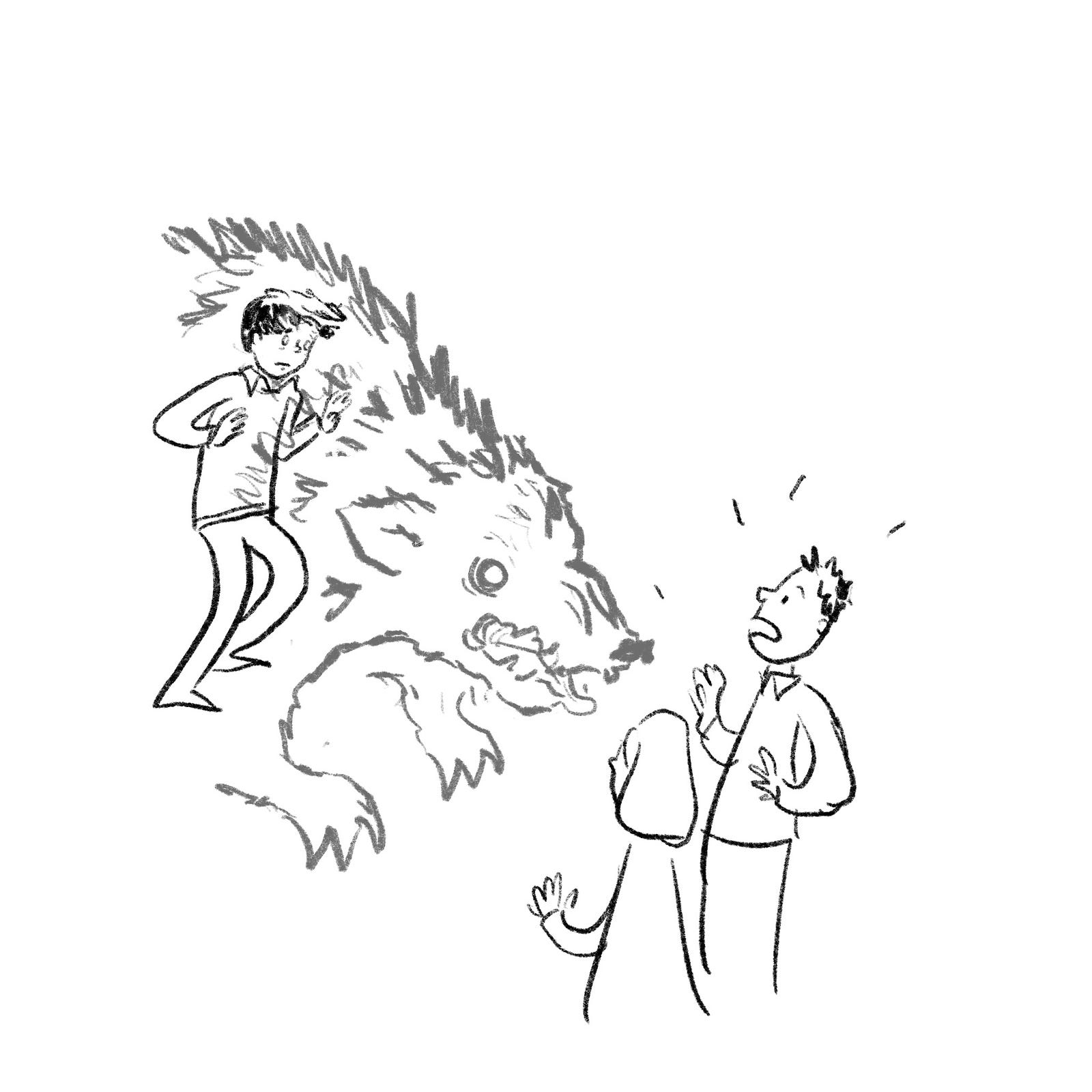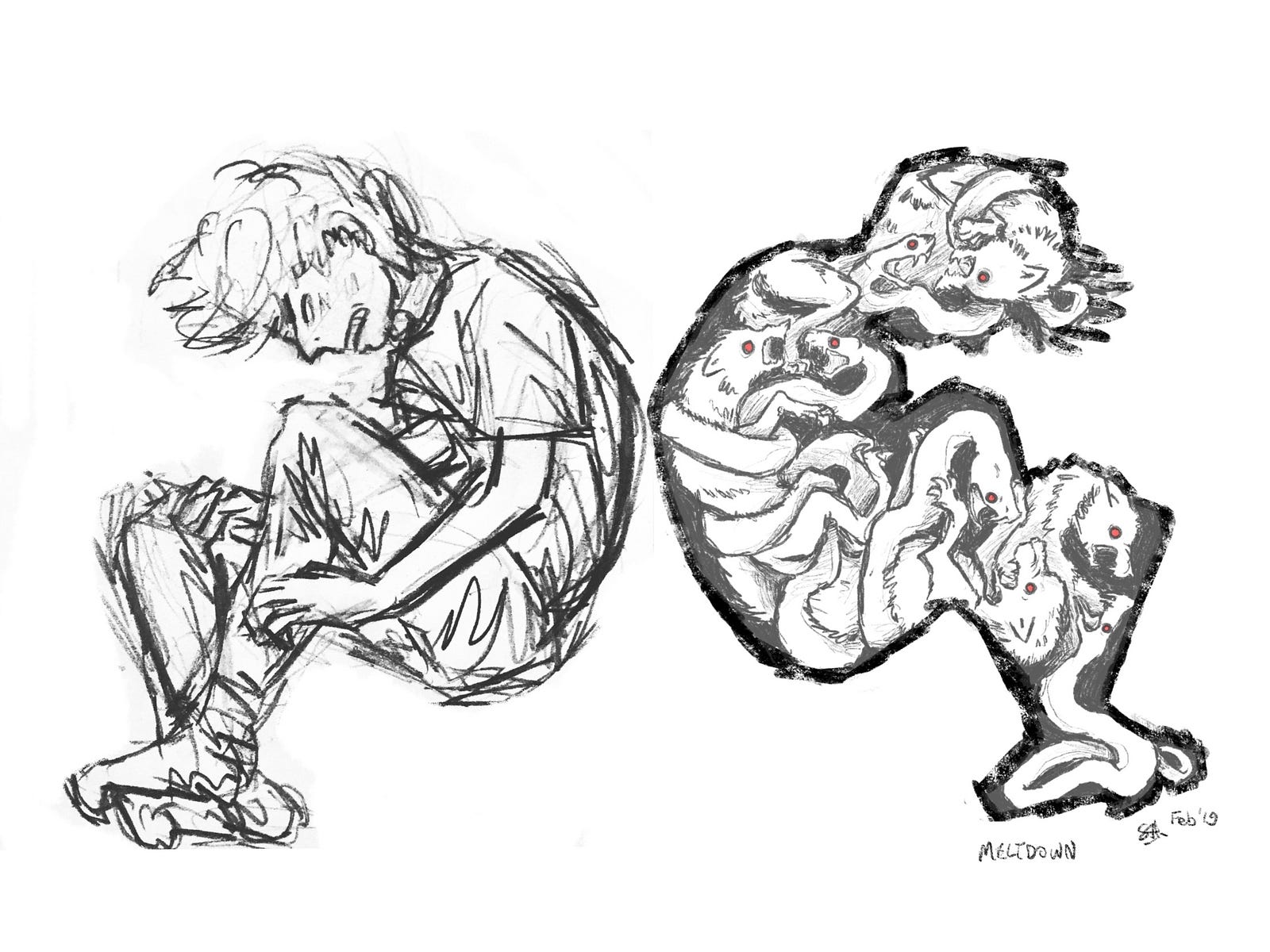As alarm grew over autism prevalence at the turn of this century, there was much public talk of a growing “epidemic.” That language has since softened, and it is now clear that many autistic people were there all along, their condition unrecognized until relatively recently.
But what is the cause? The emerging narrative today is that there is no single cause—rather, multiple factors, roughly sorted into the categories of genetics and environment, work together in complex ways. Because of this complexity and the
hundreds of
gene variants that have been
implicated, developing human brains may follow many possible paths to arrive at a place on the autism spectrum.
And this may help explain something true about autism:
It varies greatly from one person to the next.
As clinicians view it, autism involves communication deficits and formulaic, repetitive behaviors that present obstacles to establishing conventional relationships. The soft borders of that definition—where does communication difficulty cross over into communication deficit?—suggest blurred margins between people who are diagnosed with autism and those who approach, but never quite cross, the line into diagnostic territory.
Those who do have diagnoses display behaviors on a continuum of intensity. Their use of spoken language ranges from not speaking at all to being hyperverbal. They can have a unique interest in the finer details of window blinds or an intense but more socially tolerated fascination with dinosaurs. As with many human behaviors, each feature exists on a spectrum, and these spectra blend in a person to create what clinicians call autism.
By pinpointing risk-associated genes and uncovering their roles, studying the roots of autism also is providing new insights into the development of all human brains, autistic or not. Here is a taste of what we now know, and what we don’t, about autism’s causes—and what that search is teaching us about everybody’s neurology.
They know it when they see it
Despite the many and varied threads that may interweave to cause autism, the condition is largely identifiable. What clinicians are really saying when they diagnose autism, says James McPartland, a clinical psychologist at the Yale Child Study Center, is that they see a recognizable, if broadly defined, constellation of behaviors. “So really, there is something true about autism, and everyone who meets the diagnosis of autism shows these kinds of behaviors.”
 |
US rates of autism diagnoses have increased over the years, as shown in a graph. Numbers are averages of prevalence among 8-year-old children from several reporting sites of the CDC's Autism and Developmental Disabilities Monitoring Network. Not all sites reported in each year shown, and the ranges can be broad (for example, in 2000 the average was 6.7 per 1,000 children, but the range from different reporting sites was 4.5 to 9.9). At least part of the increase is due to heightened awareness and shifting diagnostic criteria.
[image: Bar chart showing the rise in autism diagnoses from 2000 to 2014, based on Centers for Disease Control (CDC) data.] |
At the same time, the subtle differences in how each autistic person manifests the telltale features make it highly individual, says Pauline Chaste, a child psychiatrist at Inserm U 894, the Centre de Psychiatrie et Neurosciences, in Paris. “We describe a specific behavior that exists — that kind of social impairment and rigidity. You can have more or less of it, but it definitely exists.”
The more or less of autism could trace, in part, to the types of gene variants that contribute to it in a given person. Some of these variants
have a big effect by themselves, while others make tiny contributions, and any autistic person could have their own unique mix of both. One thing seems clear: Though there may be something true about autism, as McPartland puts it, the existence of “one true autism gene” or even one gene for each autism feature is unlikely.
Instead, there will be patterns of gene combinations and the results they produce, says epidemiologist Elise Robinson of the Harvard T.H. Chan School of Public Health and an associate member of the Broad Institute. People who have both autism and intellectual disability, for example, tend to have more big-effect gene mutations than people with autism alone.
Facial communication
Looking for these contributing gene variants isn’t simply an exercise in scientific curiosity or in finding potential targets for drug treatments. Because most of these genes direct how human brains develop and nerve cells communicate, learning about how they lead to autism can also reveal a lot about how everyone’s brain works.
For example, a key autism trait is atypical social behaviors, such as, sometimes, not focusing on “social” facial features like the eyes. Although the tendency to look into another person’s eyes seems like something we might learn simply from being around other people, autism research has revealed that genes underlie the instinct.
In
a 2017 study, the authors first showed that identical twins are similar in how they look at a video with social content, such as faces. When viewing the same video, the identical twin pairs shifted their eyes with the same timing and focused on the same things far more than did two non-identical siblings or unrelated children. The fact that almost all twin pairs shared this tendency suggests solid genetic underpinnings for the behavior.
Having established a strong genetic contribution to this trait, the investigators, from Emory University and the Marcus Autism Center in Georgia and Washington University in St. Louis, then showed that the tendency to look at the eye and mouth areas of a human face is decreased in autistic children. They concluded that while not all of the inclination to look at certain parts of a face is genetic, much of it is.
Twin studies like this are powerful tools for evaluating how much genes dictate a feature, and such investigations reveal that the genetic contribution to autism is substantial. Autism also tends to cluster in non-twin family members: One in five infants
who has an older sibling with autism also develops it.
Genetic determinants
Overall, genetics accounts for about 70 to 80 percent of factors contributing to autism, says neurologist Daniel Geschwind, director of UCLA’s autism research and treatment center. By comparison, a condition like depression has an underlying genetic contribution of about 50 percent, he says. Alessandro Gozzi, neuroscientist and group leader at the Istituto Italiano di Tecnologia, weights the power of genes even more, placing the shared diagnosis rate between twins as high as 95 percent, depending on how strict the diagnostic boundaries are. But regardless of the precise value, he says that the “wide consensus” among autism researchers is that genetics is a powerful determinant of autism.
Going the next step — finding the specific genes involved—is a monumental task. It’s also one that yields dividends for understanding brain function more broadly.
The candidate gene variants are today very numerous, but a few stand out for their potential to exert a large effect. Chaste cites
fragile X syndrome and
Rett syndrome as examples—both are genetic conditions (termed syndromes because they are defined by a cluster of traits) that are tied to variants of a single gene or chromosome region and are closely associated with autism.
The gene linked to fragile X syndrome lies on the X chromosome. Its name,
FMR1, is easily forgettable, but the effects of its variants are not. Studies on the causes of fragile X reveal that the protein this gene encodes, FMRP, acts as a cellular shuttle for RNA molecules that are crucial for nerve-cell communication and plasticity of connections in the brain. In people with fragile X, cells don’t produce the protein, or make very little of it. The FMR1 variants underlying fragile X are the
most common known genetic cause of intellectual disability and are implicated in
1 to 6 percent of autism cases.
Like FMR1, the genetic changes involved in Rett syndrome also affect brain development. A gene called methyl CpG binding protein 2, or
MECP2, oversees the activity of many brain-related genes, turning them off or on. Because of
this pivotal role for MECP2, mutations that affect its function can lead to broad effects. Some of the resulting features look so much like autism that
Rett syndrome was categorized as an autism spectrum disorder until 2013.
Other genetic syndromes also include autism as a feature. Some are caused by variants in a gene called
SHANK3 which, like most genes implicated in autism, is involved in brain development and function. The protein that it encodes helps to coax nerve extensions to form and take shape so that a nerve cell can communicate with others. The SHANK3 protein also provides a physical scaffold for those cells to link up. In populations of people with mutations that prevent SHANK3 protein production or who are missing the segment of chromosome 22 that contains the gene, most will have autism or
Phelan-McDermid syndrome, which often includes autism.
Yet another syndrome arises from the loss or duplication of a
chunk of chromosome 16. Researchers linked this chromosomal change to autism in studies comparing the DNA of people with and without the condition,
singling out sequence alterations found only in autistic participants.
Despite their clear ties to autism, these syndromes are rare. “Collectively, they are found in about 5 percent of the total population of patients with autism,” Gozzi says. That leaves a great deal to explain.
Inheritance on a spectrum
So where do the other autistic people come from, genetically speaking? Robinson says that their genetics don’t neatly fall into two types of buckets, of either a few genes with big effects or many genes with small effects. “It’s been well established at this point that it’s not either–or,” she says.
In fact, says Gozzi, varying combinations of big-effect mutations and lots of different, smaller-effect ones could explain the wide spectrum of differences observed among autistic people. The evidence supports such a range, he says: everything from a few heavy-hitting variations in some people, to an additive dose from many variants in others, and with overlap between the two patterns in still others.
 |
Scientists have identified many genetic variants that are linked to a raised risk of autism. Often, these variants affect the function of genes involved in the development and activity of brain cells. Here are four such genes, each of which carries instructions for a protein (called MECP2, PTEN, FMRP and SHANK3) that has an important function in neurons. Studies like this, of autism’s genetic causes, are teaching scientists more about brain biology.
[image: Graphic illustrating how four different genes affect neurons.] |
Geschwind adds yet another layer of complexity: the role of the cellular environment that all the other gene variants in a person create, known as the background effect. For example, someone could have a mutation conferring high risk that is either enhanced or diminished by the background input from other genes not directly related to autism, to create a gradation of autism intensity.
Environmental influences
When researchers speak of environmental inputs to traits, diseases and disorders, they are referring to everything from pollutants in the air to subtle perturbations inside cells to cues from other cells. Finding such causative candidates for autism generally involves epidemiological studies that look for correlations between autism rates in a population and an environmental factor of interest.
These connections aren’t easy to locate. In the case of genes, if a study involves enough people, even rare genetic differences that make small contributions to autism can often be plucked from the pile. Not so for environmental influences if their effects are significant but small, says Robinson. Within those epidemiological studies, you have to be able to detect that slight signal and assess its power against the larger, background noise of lots of other variations in the cell, body or outside environment that you might not even be aware of and might not be relevant. “We don’t live in a simple, single-exposure world,” says Kristen Lyall, an epidemiologist at Drexel University in Philadelphia.
And even when a connection is made, its basis is still just math. That is certainly the first step in evaluating a link between an environmental factor and a condition such as autism: As one thing goes up, does the other follow? But two things that track together don’t necessarily share a biological association. (One of the silliest examples to illustrate how misleading correlation can be is how tightly the number of people killed by venomous spiders each year tracks with the
number of letters in the winning word of the same year’s Scripps National Spelling Bee.)
In the case of genetic studies, gene changes with tiny effects can still be considered plausible if their usual role relates to brain function in some way. Environmental factors aren’t as well catalogued, measured and tracked. But the better epidemiological studies do look for correlations with credible and pre-identified factors of interest (so, not Scripps Spelling Bee words).
For feasibility’s sake, work on environmental factors in autism has tended to focus on inputs that have broad effects on brain development. Robinson points to
extreme preterm birth, which is related to many kinds of neurodevelopmental disorders—autism among them.
Eventually, studies can add up to connect dots and arrive at a plausible story of cause and effect. For example, along with preterm birth,
air pollution also has been linked to autism risk. Another recent study found that when oil and power plants close down,
preterm births in the region drop. It’s therefore a reasonable hypothesis that very preterm birth operates as an intermediate between air pollution exposure and autism.
Lyall believes that prenatal exposures to environmental pollutants that can behave like hormones are particularly strong candidates for involvement in autism risk. These chemicals, collectively known as endocrine-disrupting compounds,
include pesticides and even heavy metals, and they are pretty much everywhere—in air, land, water, food and us.
Some research suggests, for example, that
exposure to the endocrine disruptor mercury in air pollution raises autism odds. The studies are few and the data haven’t overwhelmingly showed increases in risk, Lyall acknowledges, “but I think that it’s an interesting and important area for future research given the lack of regulation around these chemicals, their ubiquity in the environment and their known adverse effects on broader neurodevelopment.”
Researchers have also homed in on plausible biological bases for a couple of other potential environmental effects. Gozzi points to animal studies,
mostly in mice, that bolster human work linking autism in a child with
prenatal exposure to a mother’s ramped-up immune responses as a result of infections. Again, Gozzi stresses that the findings are far from definitive, and most studies involving humans have focused on infections
severe enough to
require hospitalization.
Another unearthed link is to
paternal age at conception: Studies find that autism risk increases with the age of the father, usually starting in the thirties or forties, although the age range and magnitude of the increase vary among different studies. The cells that give rise to sperm tend to
accumulate new mutations over the years, so the sperm contain sequence changes that pass to offspring but aren’t present in the father’s own body cells. Some of these changes involve regions or genes already implicated in autism risk. Sperm also show
changes in the chemical tagging of DNA that
controls the activity of genes.
Establishing environmental cause unequivocally is almost impossible, because of ethical constraints. It’s one thing to examine blood or tissue samples for genetic variants that track with autism diagnoses. It’s another thing entirely to manipulate factors to see if they induce autism or not. No one’s going to deliberately infect a pregnant woman or have a group of men specifically delay fatherhood just to test how these factors influence autism odds.
Researchers instead are stuck finding correlations between these factors and then looking at available measures, such as changes in gene activity, accrual of mutations over the lifespan and studies of autism-like behavior in animal models. And as they look at these associations, they often make discoveries that are relevant beyond autism—ones that have now been extended to studies of
schizophrenia,
aging and even
human evolution. The link between autism and having an older father, for example, has led to studies examining how changes in sperm over time affect brain development in later generations.
While most environmental candidates remain just that—candidates—Lyall says emphatically that one factor is out of the running:
vaccines. “That’s pretty conclusively been shown to have no association with autism,” she says, noting the numerous large epidemiological studies that have reached that conclusion.
The settled vaccine question is a small point of clarity in an otherwise blurred landscape of autism cause-and-effect research. Every new finding seems to open up yet more pathways, some leading toward autism, and some toward broader revelations about the brain and how hormones, the immune system, the air we breathe and more add up to make their mark on neural development. The network of genetic and environmental factors that converge and diverge to produce autism may reflect not only the multiplicity of ways of being autistic—but also, more broadly, of being human.
----
, an independent journalistic endeavor from Annual Reviews.

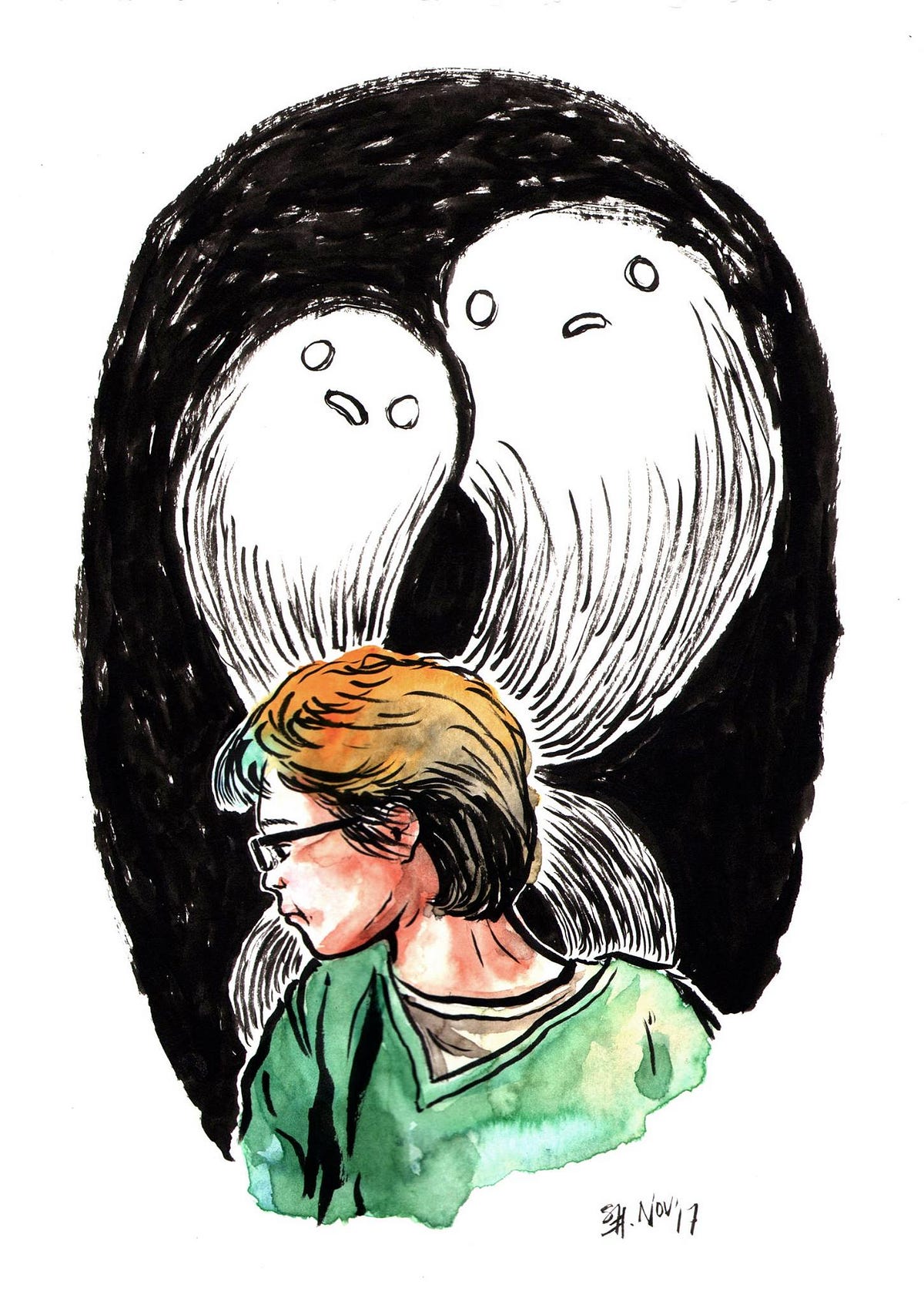


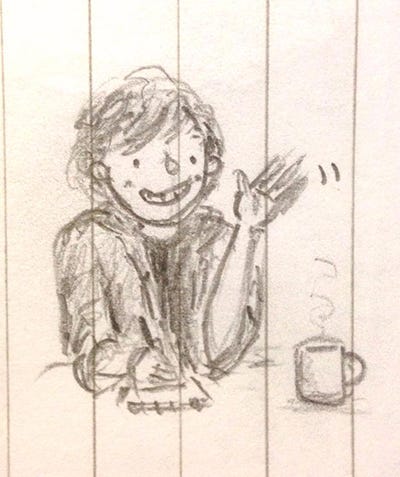



![Image description: a five panel black-and white cartoon. Panel 1: Sketch of a white large feather on a black background. The tip of the feather is pointing at the lower left corner on a diagonal. The caption at the top of the panel reads, in white, “Sometimes it builds up over time…” Panel 2: The same feather, its tip pointing at the top right corner, also on a diagonal. The caption continues, “a gradual increase in nervous ENERGY” Panel 3: Sketch of a black door marked “Pull” with a white frame. A person is reaching towards the door handle with their left hand. They are wearing a coat and fingerless gloves. Only their arm is visible. The caption continues, “Like STATIC in cold dry weather, a gradual shift from an irritating tickle to pinpricks of electricity” Panel 4: the same person pulling their hand away from the door. Their hand is surrounded by small white lightning bolts, and a large white lighting bolt is drawn on the top of the page. The caption continues, “To full-on JOLTING SPARKS” Panel 5: Sketch of bird flying in a cloudy sky at the top of the panel. The rest of the panel is sketched perpendicular to the sky.he panel is the same size as all the previous panels put together. There is a drawing of a loop of road on the far left side of the panel. There is a tangle of arrows and road signs on the right side of the drawing. The caption finishes, “Sometimes it comes out of the blue… Perhaps from a SUDDEN CHANGE of plan, leaving everything confused and out of control.” In full, the caption reads: “Sometimes it builds up over time… a gradual increase in nervous ENERGY like STATIC in cold dry weather, a gradual shift from an irritating tickle to prinpricks of electricity to full on JOLTING SPARKS[.] Sometimes it comes out of the blue… Perhaps from a SUDDEN CHANGE of plan, leaving everything confused and out of control.”](https://cdn-images-1.medium.com/max/1600/1*rFZmW2wspQTU2EE6TSGGpg.jpeg)
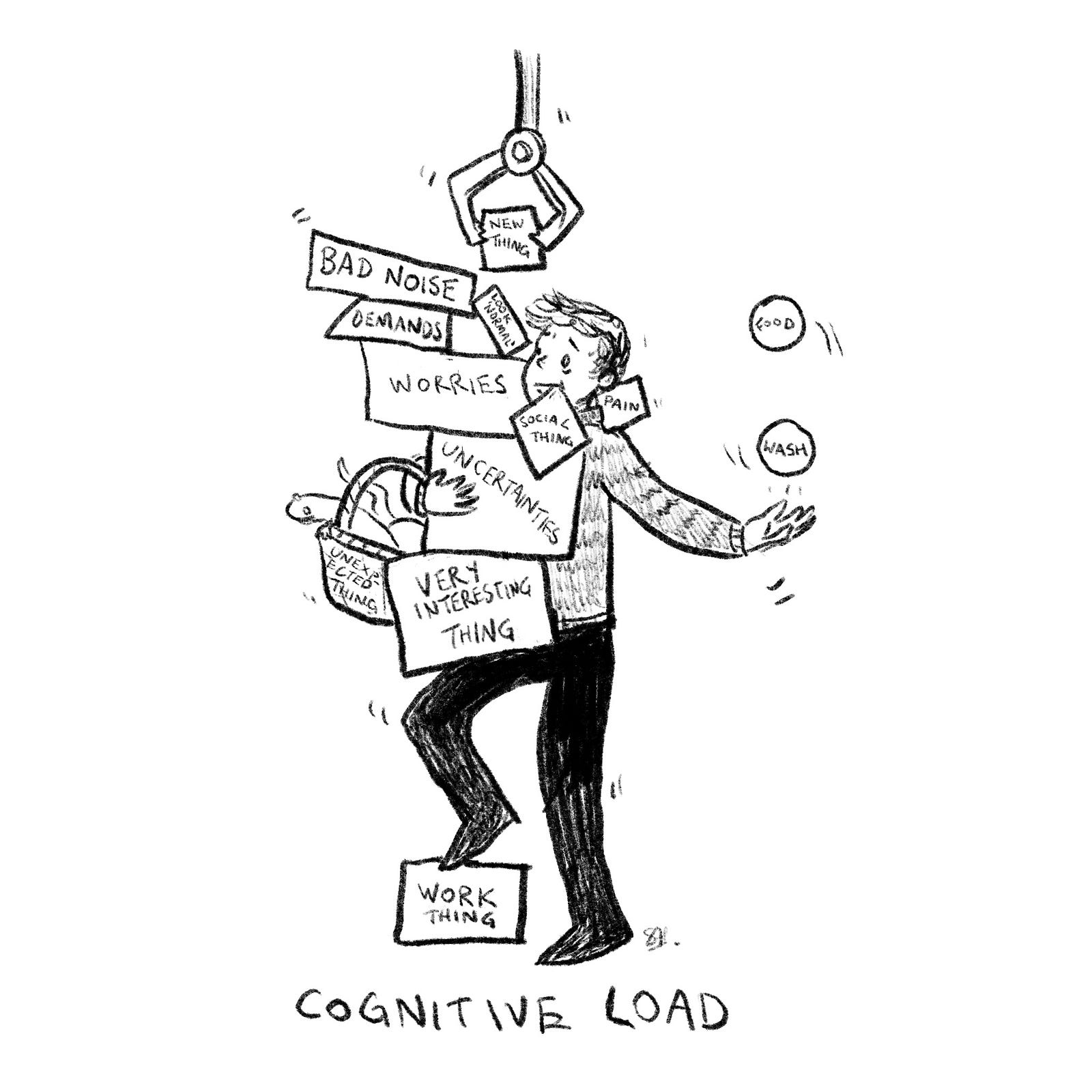
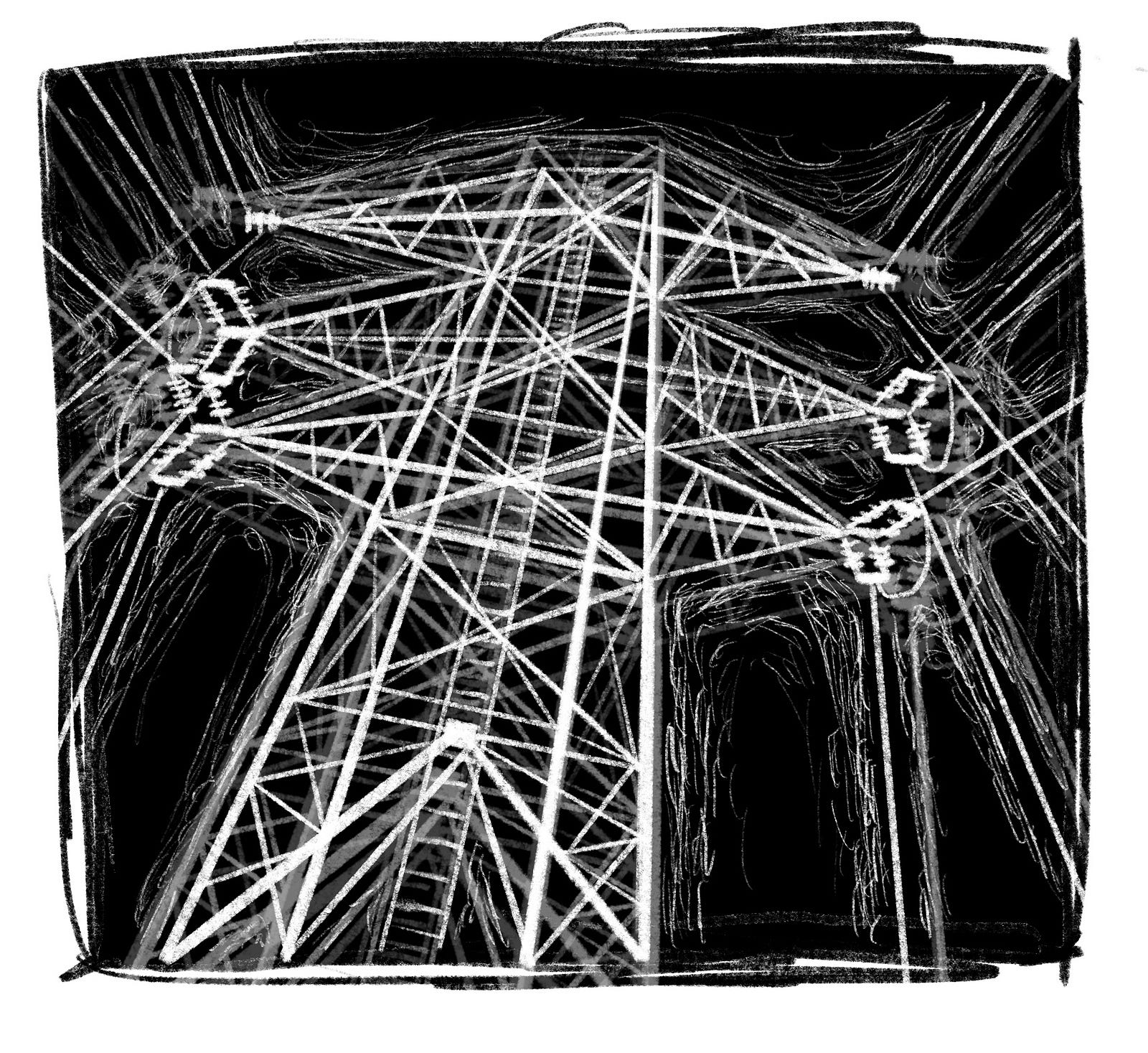
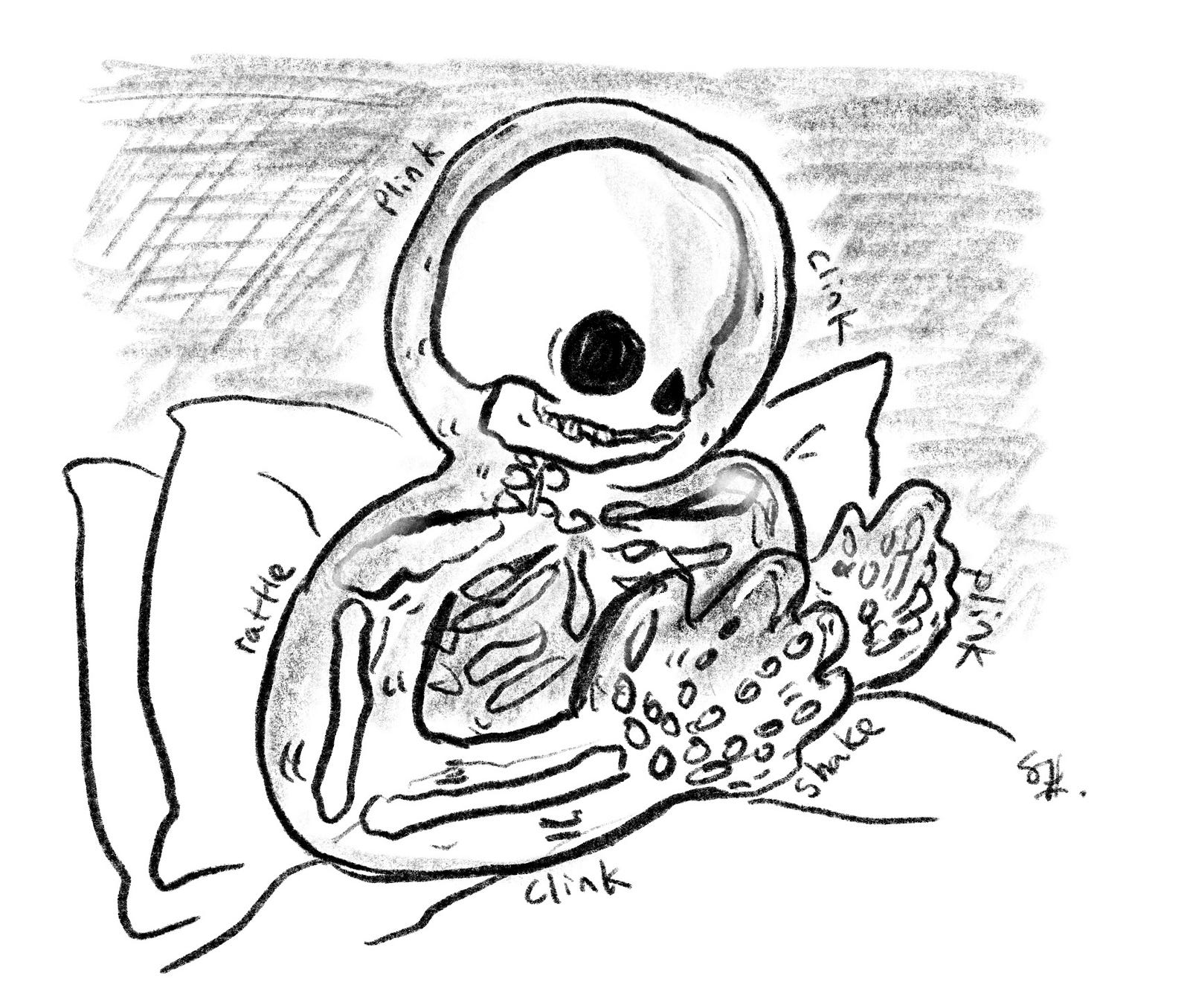
![separated by a long diamond. In the first section is a drawing of a white palm. The section is captioned “My edges feel fuzzy, like I’m drifting apart.” The second panel has a drawing of the same hand in a first. It is captioned, “Perhaps that’s partly why…” The third panel contains a drawing of a fist slamming into the bottom of the square, cracking the surface below it. Above the first is a large, a jagged semi-circle, showing that the fist was slammed down with great force. The caption finishes, “…I feel like I need to SLAM them back into place. In full, the caption reads, “My edges feel fuzzy, like I’m rifting apart. Perhaps that’s partly why… …I feel like I need to SLAM them back into place.”]](https://cdn-images-1.medium.com/max/1600/1*GkDoE4ytjPr6CBP0rHzebw.jpeg)

